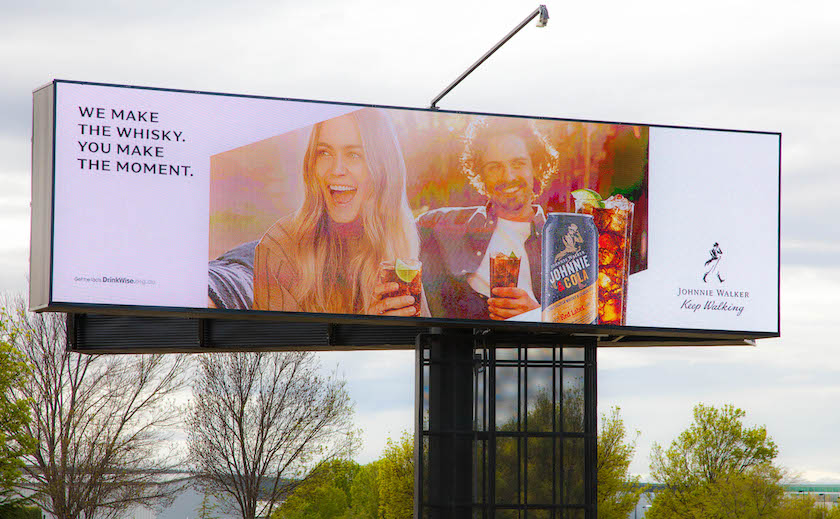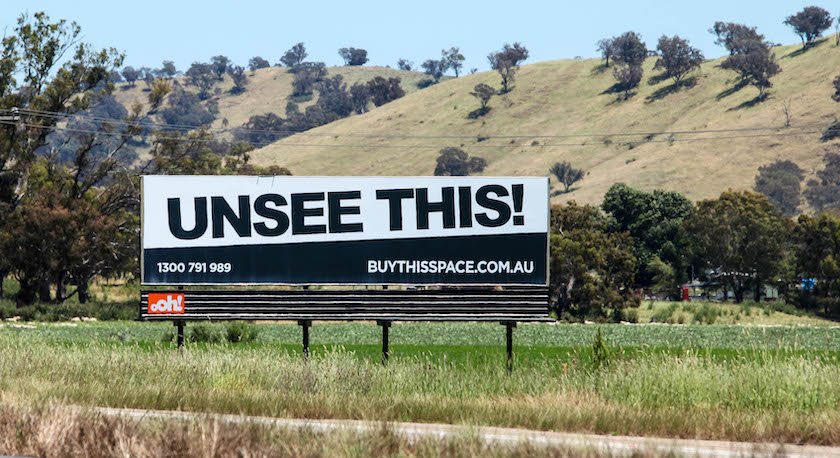Public ideas
The occupation of public space
What do the cities of Lyon, Grenoble, Bristol and Sao Paulo have in common?
They ban billboards from their streets, explain Robbie Gillett from the UK’s Ad-Free Cities and Gabrielle Joint from France’s Plein la Vue Citizen Collective, on Late Night Live: The cities going billboard-free. (17 minutes)
Canberra was another city they may have mentioned, but it lost its status when the owners of Canberra Airport erected this monstrosity:

They were able to conduct this assault on public space because Canberra Airport is on Commonwealth land, outside the jurisdiction of the ACT: to the Coalition public space is there for conversion into market space.
On the Late Night Live program Gillett and Joint discuss mainly the aesthetic aspects of billboards. It is noticeable that owners of businesses that scatter these gaudy eyesores around our cities choose to live in uncluttered leafy suburbs.
It’s not only in urban areas that these are erected. Along roads and highways trees are chopped down in order to allow passers-by a clear view of advertising hoardings. And if the billboard companies cannot find a customer they mount an assault on the language as well as on the environment.

No space is off-limits. Electronic billboards have been erected in Sydney’s already narrow sidewalks, blocking sightlines and forcing pedestrians to squeeze around them.
Understandably people complain about the appearance of billboards, and about the distractions they provide on public roads. With their stark outlines and use of bright saturated colours, they also add to the visual noise of our built environment, contributing to the stress of over-stimulation.
These are the more obvious irritants of billboards, but their most serious aspect is an appropriation of public space. Just as urban graffiti vandals “tag” spaces to mark their territory, so does the corporate sector tag public space to take it over. There is to be no space in which citizens can be free of the dominance of the market.
In 1944 the economic philosopher Karl Polanyi warned that in time to come people would be no longer living in a society, but in a market. His prophecy was spot on: the advertising industry, particularly the outdoor advertising industry, seeks to enclose every aspect of physical and metaphorical public space.
State and local governments use the pathetic excuse that billboards provide revenue, offsetting rates and other taxes. This is the thinking of small-minded financial bookkeepers, who do not consider the way such vandalism of public space turns people away from doing business or living in such deliberately polluted spaces. They fail to understand that the outdoor advertising industry is a parasite that not only saps the life out of public space, but that also eventually weakens its host as people seek refuge from the wasteland it leaves behind.
When the outdoor advertising industry made an assault on Canberra in 2018, attempting to see its billboard ban lifted, a poll financed by concerned citizens revealed that 78 percent of respondents agreed that Canberra’s advertising-free environment made it a more pleasant place to live than other, bigger cities. (The poll results were published in the Canberra Times: those who intend following the hyperlink are warned that the article depicts nudity.)